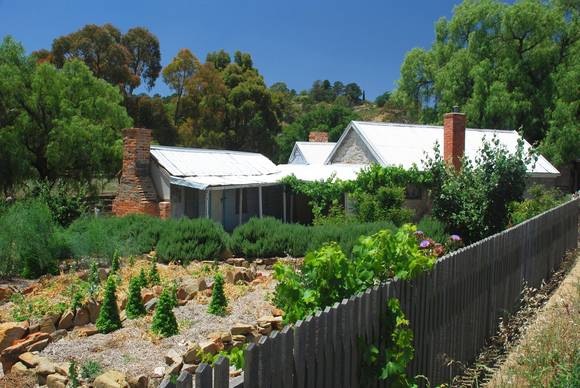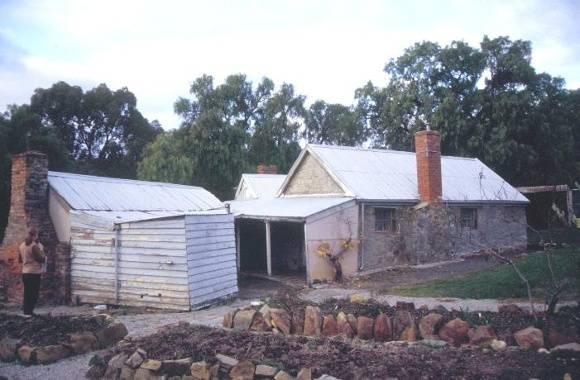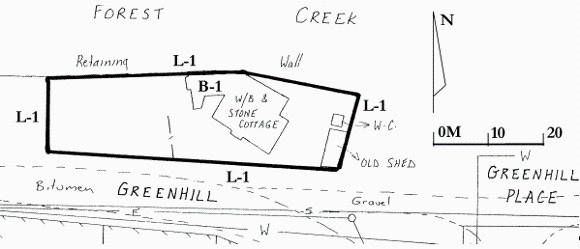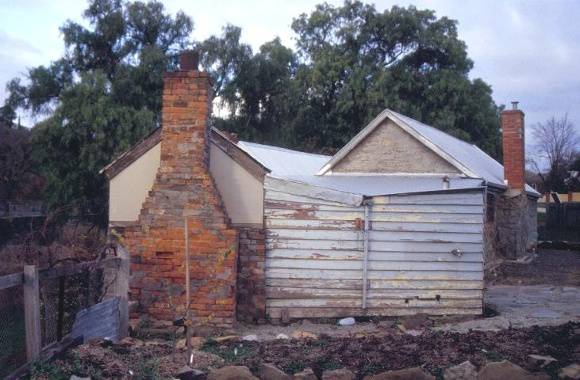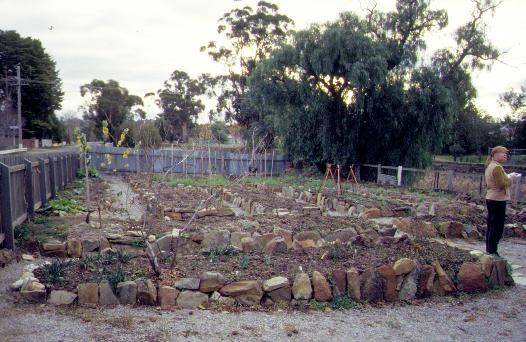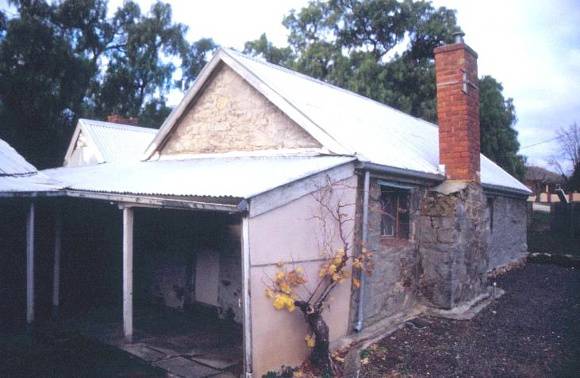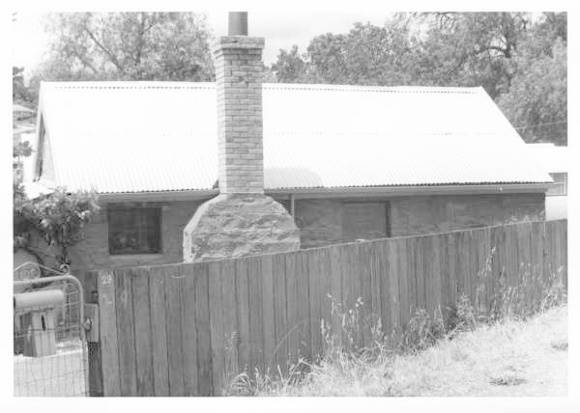| Back to search results » | Back to search page » |
|
TUTE'S COTTAGE (FORMERLY HANNAN'S)
Other NamesHANNAN'S COTTAGE , TUTES COTTAGE Location29 GREENHILL ROAD CASTLEMAINE, MOUNT ALEXANDER SHIRE
File Number608448 (1)LevelRegistered |
|
Statement of Significance
What is significant?
Tute's Cottage is a five-room dwelling constructed of local stone with attached weatherboard kitchen, bathroom and laundry. The Cottage has a small garden containing two very old grape vines, fruit trees and flower beds. The property also includes an empty garden allotment. Tute's Cottage originated with the great Mount Alexander alluvial goldrush. From 1855 gold miners became entitled to a portion of land for a house and garden under the terms of the Miner's Right and Tute's Cottage has been occupied under this right since construction. The Miner's Right of the Cottage's last occupant, Gladys Power, the now-deceased daughter of a miner, expired in 1996 and the property which straddles a municipal road reserve and a Crown Creek reserve, has reverted back to the Crown.
Tute's Cottage evolved through various stages beginning with a two-roomed stone Cottage. From about 1860 to 1903 John Hannan and his family occupied the Cottage. Judging by the earliest surviving rate book entries for Ten Foot Hill it is possible that Hannan may have built the place c1860 or that it may have been the dwelling described in an 1856 rate book entry as a stone house and garden, owned by William Cook. In 1903 the property was advertised for sale as a Stone and W.B. House, 7 rooms with Good fruit garden etc. The buyer was Mrs Margaret Cuddy. James Tute, a miner acquired the Cottage in 1922. When James died of phthisis (Miner's Complaint?) in 1939, his Residence Area and Cottage passed to his wife Elizabeth. Elizabeth died in 1973, bequeathing the property to her daughter, Gladys Power. Mrs Power lived in the Cottage until shortly before her death in 1997.
How is it significant
Tute's Cottage is of historical, architectural, archaeological and social significance to the State of Victoria.
Why it is significant
Tute's Cottage is historically significant for its association with a key event in Victoria's history and a defining moment in the development of Australia's character and culture. The Cottage is situated in one of Castlemaine's oldest neighbourhoods. Ten-Foot Hill, as the locality is known, was the site of a gold rush early in 1852, within months of the first gold discovery on Forest Creek. The Cottage was built only 850 metres from the market square at the centre of Castlemaine township and closer still to the bustling stores and hotels of Urquhart Street. Continuously occupied as a private residence from 1860 or earlier until 1996, the Cottage has survived as a mute witness to gold rushes, floods, the arrival of the railway, and the development of Castlemaine as a regional centre.
Tute's Cottage is architecturally significant as a rare vernacular stone Cottage of the gold rush period. Being crown land held as a Miner's Right residence area the Cottage's various owners made only rudimentary changes to the place resulting in its original form surviving with remarkable clarity. Timber additions were added after 1881. Vernacular stone Cottages were once commonplace in Castlemaine, but all have now either been demolished or been incorporated into modern structures. Tute's Cottage is a remarkable survivor, the last gold rush stone Cottage to be occupied under a Miners Right in Castlemaine.
Tute's Cottage is socially significant due to local community recognition of the antiquity of the structure and the surrounding area. As early as 1914, Tute's Cottage was being photographed and recorded as a rare gold rush relic. In 1936, a Lands Department report on Mr Tute's residence referred to it as a 'very old house'. The surrounding block, Section 144 of the Township of Castlemaine, once contained dozens of other properties originally held under Miner's Right and, despite its modern houses, is still laid out in its original haphazard fashion which owes far more to the clamour of the gold rush than to the niceties of town planning.
Tute's Cottage is archaeologically significant for its high potential to contain evidence of its former inhabitants due to the relatively undisturbed nature of the site.
Group
Residential buildings (private)
Category
Cottage


